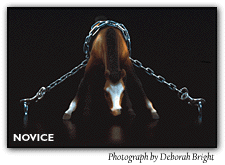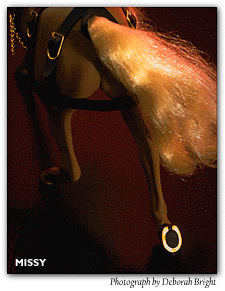Main Menu · Search ·Current Issue ·Contact ·Archives ·Centennial ·Letters to the Editor ·FAQs


| Lethal Odds | Men in Makeup |
| Cult Hormone | Edges of History |
| The Dying in Moscow | Cantering Fantasies |
| E-mail and Web Information | |

 "The phenomenon doesn't really interest psychologists," says Bright,
"because girlhood passion for horses isn't considered an aberration."
Bright herself was one of half a dozen elementary school "horse-girls"
who mimicked equine behavior-galloping, trotting, and whinnying around the
schoolyard. She remembers losing interest in "horse-play" around
puberty, and recalls one girl who was ostracized for playing horse games
past age 13.
"The phenomenon doesn't really interest psychologists," says Bright,
"because girlhood passion for horses isn't considered an aberration."
Bright herself was one of half a dozen elementary school "horse-girls"
who mimicked equine behavior-galloping, trotting, and whinnying around the
schoolyard. She remembers losing interest in "horse-play" around
puberty, and recalls one girl who was ostracized for playing horse games
past age 13.